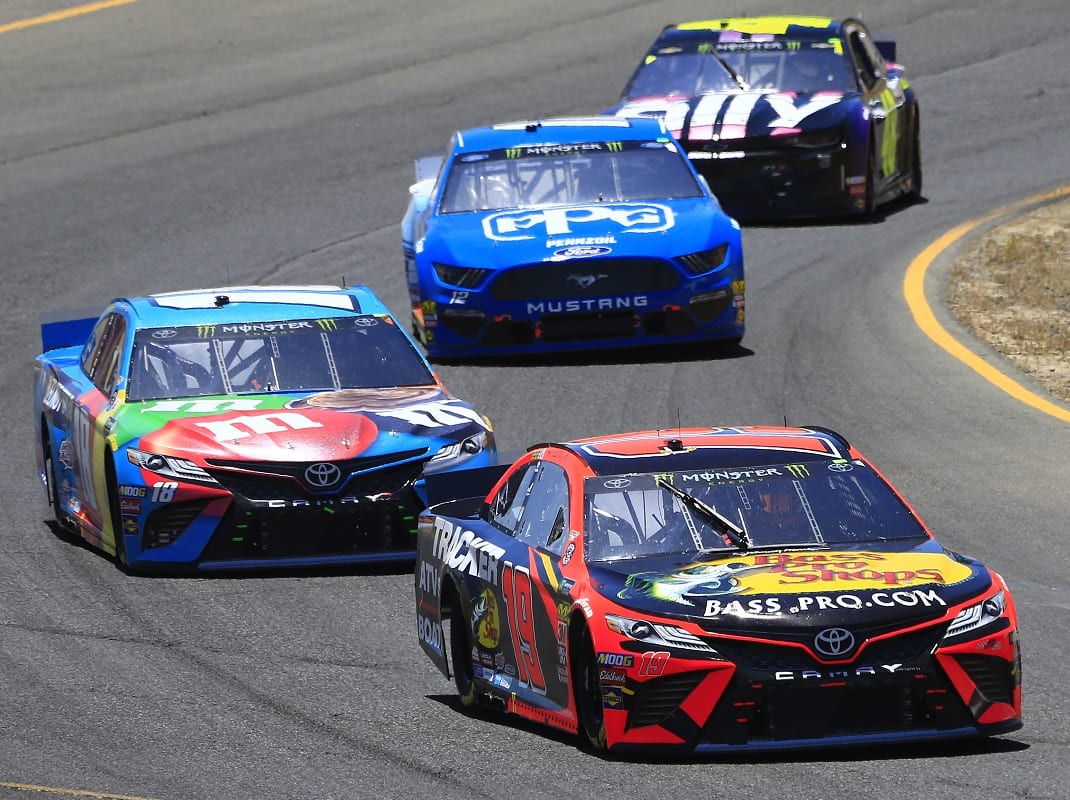DAYTONA BEACH, Fla. – NASCAR officials revealed Tuesday that only a handful of rule changes will be put into place for the Monster Energy NASCAR Cup Series next season.
These procedural updates are meant to contain costs for teams, ahead of the planned debut of the Gen-7 car for the Cup Series in 2021.
Among the rule changes announced Tuesday are:
• Each car number will be allowed a maximum of 12 certified chassis designated as “active” at any given time, as opposed to the current rules, where teams could have an unlimited number of certified chassis at their disposals. Each vehicle number will also be allowed to retain four chassis designated as “inactive,” set aside for future use.
Chassis can be decertified or retired only after use in a minimum of three races or if damage from a crash is deemed irreparable. Chassis designated for the preseason Clash exhibition race at Daytona International Speedway will not count against a car number’s active allotment, unless that chassis is also used in the Daytona 500.
Also, each organization will be permitted a maximum of 10 unique chassis designs.
• Organizations will be limited to a total of 150 hours of wind-tunnel testing per year, after previously being unlimited in the amount of wind tunnel testing that could be carried out. Testing is only permitted at four approved wind-tunnel facilities: Aerodyn Wind Tunnel in Mooresville, N.C.; Auto Research Center (ARC) in Indianapolis; Penske Technology Group Wind Tunnel in Mooresville, N.C.; and Windshear Wind Tunnel in Concord, N.C.
Manufacturers, however, are not permitted to conduct wind-tunnel tests on current-generation cars. There is no restriction on the amount of wind-tunnel testing and development for the Next Gen car model slated for 2021.
• Officials have introduced new at-track roster limits for the 2020 season, reducing the maximum number of “road crew” personnel (engineers, mechanics, crew/car chief, spotters) from 12 to 10 during race weekends.
Additionally, the new structure will limit the amount of “organizational staff” for each organization to three. Previously, three- or four-car teams were allowed to carry a fourth rostered member at the organizational level (i.e., technical director, competition manager).
• Teams must compete in a minimum of eight events with a full long-block sealed engine and at least eight events with a short-block sealed engine. Before, three full long-block seals and 13 short-block sealed engines were required to be used.
Cup Series officials and teams recently began the post-race procedure of sealing engines — either fully (long block) or just the bottom portion (short block) — as a measure to prevent costly and time-consuming rebuilds.
The practice originated in other NASCAR national series.
• The extended parts freeze for the NASCAR Cup Series will remain in place through 2020, as development continues to shift toward the Next Gen stock car.
“The 2019 season has produced great racing and we anticipate the level of competition to continue to rise as teams build off this rules package in 2020,” said John Probst, NASCAR senior vice president of innovation and racing development. “Collectively, we continue to work closely as an industry to put on the best racing possible for our fans, while working diligently on the Next Gen car, scheduled to make its debut in 2021.”
